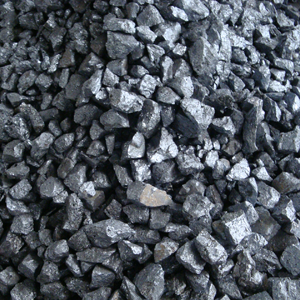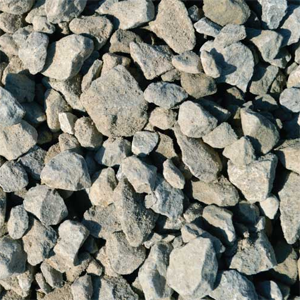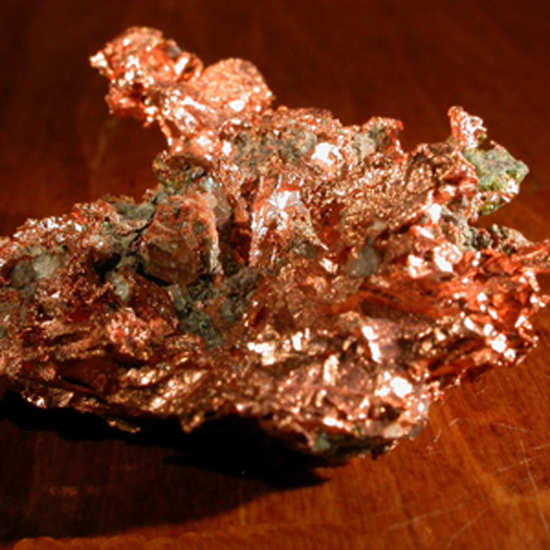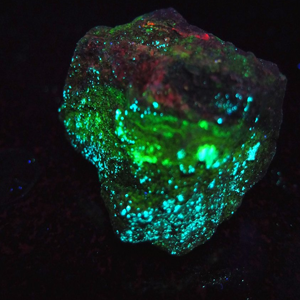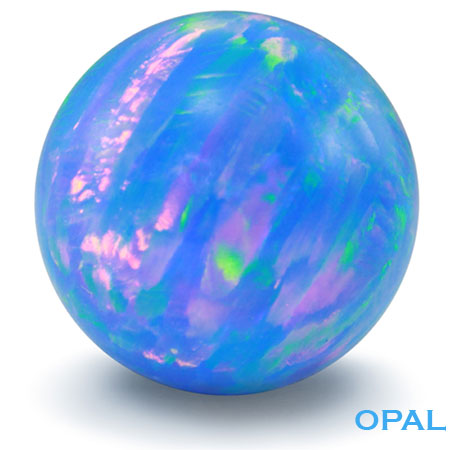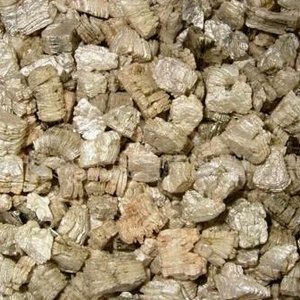TUNGSTEN MINING
TUNGSTEN :
Tungsten is rarely found in its pure state but rather in the form of chemical compounds with other elements. While more than 20 tungsten-bearing minerals have been identified, only two are significant for industrial use: wolframite and scheelite. Pure scheelite exhibits blue-white fluorescence under ultraviolet light, a property utilized in prospecting. Wolframite is a general term for iron and manganese tungstates, with the iron/manganese ratio varying. A mineral containing more than 80% FeWO4is called Ferberite, while one with over 80% MnWO4 is known as Hubnerite.
All tungsten deposits originate from cooled magma or hydrothermal sources. During the cooling process of molten rock, crystallization occurs, and scheelite and wolframite are often found in veins formed when volcanic activity penetrates cracks in the Earth's crust. Most tungsten deposits are located in younger mountain belts, such as the Alps, the Himalayas, and the circum-Pacific belt. Over the past few decades, sources of supply have changed dramatically. In 1986, the USSR was the world's largest consumer, but by 1992, the reformed CIS was exporting tungsten and, by 1996, became the world's second-largest exporter.
Tungsten is typically mined underground. Scheelite and wolframite, the primary tungsten minerals, are often found in relatively narrow veins that have a shallow dip and may widen locally with higher ore concentrations. Open-pit mines exist but are uncommon.The ore is first crushed and ground to liberate the tungsten mineral crystals. Scheelite is concentrated by gravity separation techniques, often combined with froth flotation. Wolframite, on the other hand, is concentrated by gravity methods, sometimes in conjunction with magnetic separation.
HOW IS TUNGSTEN OBTAINED?
Tungsten is primarily sourced from minerals like scheelite and wolframite, which also include Ferberite and huebnerite. Unlike other metals, tungsten cannot be refined through smelting due to its extremely high melting point, surpassing that of any other metal. As a result, tungsten is chemically extracted from crushed ore through a series of chemical reactions, titrations, washings, and filterings. The leading tungsten mining countries include China, Russia, Portugal, Austria, and Bolivia, with China alone providing approximately 75% of the world's tungsten supply. The mining methods employed for tungsten extraction are determined by factors such as the physical and chemical properties of the mineral, the ore grade and depth, and its physical form. Common extraction techniques include surface mining and underground mining.
MINING AND PROCESSING :
Surface mining methods are employed when tungsten minerals are readily accessible on the earth's surface, eliminating the need for underground excavation. These surface mining sites are commonly referred to as quarries, and they are expanded until no more viable minerals can be extracted. This method is predominantly utilized in regions such as Australia and Canada. In contrast, underground mining involves extracting ore from beneath the earth's surface, often proving to be more cost-effective. Miners drill directly into tungsten ore deposits to extract large chunks of the ore. Alternatively, the room-and-pillar mining technique entails carving out rooms within the ore deposit while leaving behind numerous pillars to support the roof. This process necessitates the development of a series of interconnected rooms and pillars.
Despite the large amount of ore mined, it is astonishing to know that most tungsten minerals contain less than 1.5% of useful tungsten. The extraction of useful minerals from the rock requires crushing machines to break down the ore into very small chunks, which are then sent to an ore-dressing plant to prepare them for making our favorite jewelry. From deep within the earth to adorning our fingers, the tungsten mining process is labor-intensive and tedious.
EXTRACTION A ND REFINING :
Tungsten ores often occur in association with sulfides and arsenides, which can be removed by roasting in air for two to four hours at 800°C. An intermediate compound, ammonium paratungstate (APT), must first be produced to obtain the pure metal. For this purpose, the ores undergo decomposition through acid leaching or by the addition of concentrated sodium hydroxide solution.In the second stage, the ground ore is kept for about 1.5 to 4 hours in a solution of 10-18 percent sodium carbonate at temperatures ranging from 190°C to 230°C under a pressure of 14.1-24.6 kilograms per square centimeter. Before removing gangue or unwanted waste by the filtration process, the acidity is adjusted to pH 9-9.5, and aluminum and manganese sulfates are added at 70°C-80°C and stirred completely for an hour. This helps eliminate phosphorus and arsenic, thus reducing silica to a level of 0.03-0.06 percent. Sodium sulfide is then added at 80°C-85°C at a pH of 10 to remove any presence of molybdenum. After holding for an hour and acidifying the solution to pH 2.5-3, it is stirred for seven to nine hours, causing molybdenum sulfide to precipitate.The sodium tungstate solution obtained can be purified by precipitation and filtration, after which it is converted to an ammonium tungstate solution. This purification is carried out through a liquid ion-exchange process with the help of an organic extractant containing alamine-336, decanol, and kerosene in specific proportions. The tungstate ions transfer from the aqueous phase to the organic phase during the countercurrent flow of the extractant through the solution. The tungsten present in it is then stripped from the extractant into a solution containing ammonium tungstate. For a highly pure solution, the Ammonium Paratungstate formed as a result is sent to an evaporator for crystallization.
In the process of acid-leaching, the scheelite ore concentrate is decomposed by hydrochloric acid in the presence of sodium nitrate, which acts as an oxidizing agent. This mixture is heated by steam spraying and maintained at 70°C for 12 hours. The resulting slurry contains tungsten in the form of solid tungstic acid and is then diluted and allowed to settle. The tungstic acid is dissolved in aqueous ammonia at 60°C by stirring continuously for two hours. Calcium from the obtained solution is precipitated as calcium oxalate, while phosphorus and arsenic are removed by adding magnesium oxide, resulting in the formation of insoluble phosphates and arsenates of ammonium and magnesium. Silica, iron, and other impurities that form colloidal hydroxides are removed by adding a small amount of activated carbon. Finally, the solution is purified through pressure filters and evaporated to obtain APT crystals.
Production of Tungsten powder :
When ammonium paratungstate undergoes decomposition to tungsten oxides, various colors of the oxides are displayed according to the composition: yellow color is seen in the trioxide, whereas the dioxide appears brown, and the oxide is purple-blue. APT is typically decomposed to the intermediate oxide in a rotary furnace to maintain a reduced atmosphere under a stream of hydrogen, causing the ammonia in the crystals to partially decompose into nitrogen and hydrogen. This is the process used for producing tungsten industrially. The rotary furnace is divided by partitions into three zones maintained, respectively, at 850°C, 875°C, and 900°C. The furnace is then tilted slightly and rotated to provide a continuous flow of powder through the central holes of the partitions.
The blue oxide is reduced to metallic tungsten powder by hydrogen in stationary furnaces at temperatures ranging from 550°C to 850°C.
WO3(g)+ 3H2(g) -----> W(s)+ 3H2O(g)
Even though the powder is generally contaminated with tungsten carbide and some mineral elements contained in the carbon, the ammonium paratungstate can also be reduced by carbon. When APT and carbon are mixed and reacted at 650°C to 850°C, the product formed is a blue oxide. When heated in the range of 900°C to 1,050°C, the brown oxide is formed. A temperature higher than 1,050°C is required for complete reduction to a pure tungsten metal of 95% purity.
TOP TUNGSTEN PRODUCING COUNTRIES :
1. China: China is the world's leading tungsten producer, accounting for over 80% of global output. In 2019, China produced an estimated 73,000 metric tons of tungsten, up from 70,000 metric tons in 2018. The major tungsten-producing areas in China are Hunan, Jiangxi, Guangdong, Fujian, and Guangxi.
2. Russia: Russia is the second-largest producer of tungsten in the world, with an estimated output of 5,900 metric tons in 2019. The major tungsten-producing regions in Russia are Chelyabinsk, Altai, and Khabarovsk.
3. Vietnam: Vietnam is the third-largest producer of tungsten in the world, with an estimated output of 4,400 metric tons in 2019. The major tungsten-producing regions in Vietnam are Quang Ninh and Ha Tinh.
4. Canada: CCanada is the fourth-largest producer of tungsten in the world, with an estimated output of 3,800 metric tons in 2019. The major tungsten-producing region in Canada is Ontario.
5. South Korea: SSouth Korea is the fifth-largest producer of tungsten in the world, with an estimated output of 2,400 metric tons in 2019.
ANNUAL TUNGSTEN USAGE :
Tungsten is a metallic element extensively utilized in industry and commerce, spanning various applications from electrical and electronics equipment to the manufacturing of industrial tools and materials. Its annual usage is estimated to be around 10,000 tonnes. Tungsten is commonly employed in the form of tungsten carbide and tungsten alloys. Tungsten carbide, a compound of tungsten and carbon, finds application in producing tools like drills and saws. Meanwhile, tungsten alloys are utilized in crafting materials such as springs, wire, and bearings.
Tungsten finds applications across various industries, including electrical and electronics, automotive, aerospace, defense, and medical sectors. It is utilized in manufacturing light bulbs, capacitors, transistors, and other electrical components. In the automotive industry, tungsten is integrated into spark plugs and catalytic converters, while in aerospace, it contributes to jet engines and turbines. Additionally, tungsten is employed in defense applications such as armor plating and missiles. Its annual usage extends to the production of jewelry, including rings, bracelets, and necklaces, as well as in minting coins and crafting medals. Overall, tungsten serves as a crucial element in the production of many modern technologies and materials across various industries.
TUNGSTEN PRODUCTION IN THE WORLD :
China is the largest producer of tungsten, accounting for a majority of the world's production. Additionally, China possesses the world's largest reserves of tungsten ores. Initially, Russia held the position of the second-largest tungsten producer globally, followed by Europe. However, Vietnam has now taken over as the second-largest tungsten producer. The United States also ranks among the top tungsten-producing countries, boasting some of the richest tungsten reserves globally. Other significant tungsten producers worldwide include Bolivia, the United Kingdom, Austria, and Canada.
|
|
||
Related Mining









